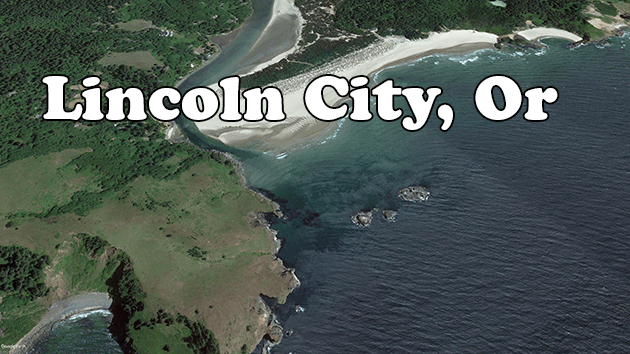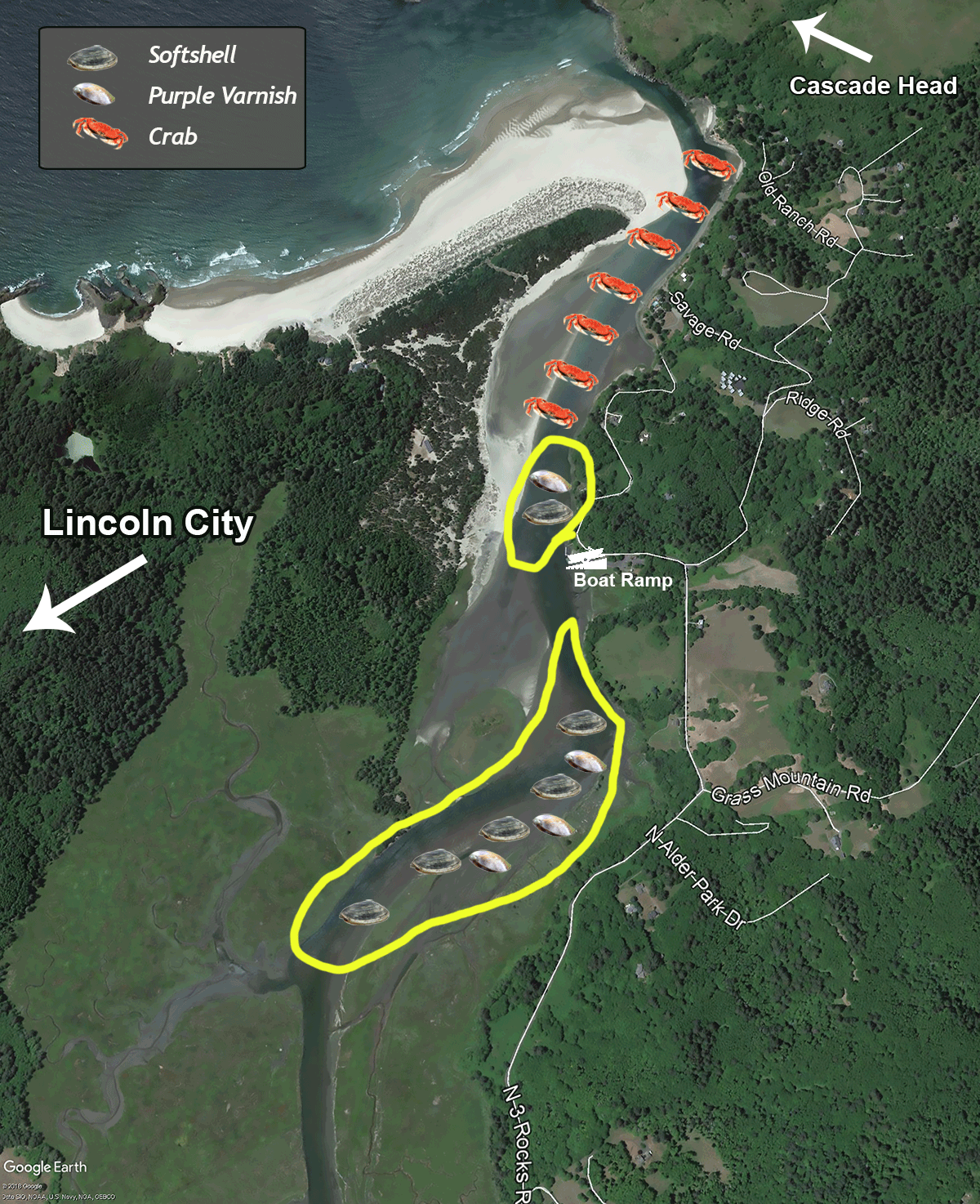
- Clamming, Crabbing, Fishing, Kayaking, Hiking, Birding
- One of Oregon’s Smaller Estuaries
- Crabbing is Best When There is More Salt in the Estuary, Plan Accordingly
- Lot’s of Bank Fishing Locations, Can Get Crowded in Places
- Cascade Head, Hiking With Spectacular Views

Salmon River Estuary
The Salmon River Estuary is dominated by fresh water. The Salmon River Estuary is one of Oregon ’s smallest, however it’s also one of the most popular with anglers. The high number of Chinook salmon returning to the estuary attracts large numbers of fishermen which can sometimes overcrowd the area.
Clamming
Clam digging is limited to the harvest of softshell and purple varnish clams. It’s a hike from the boat ramp east to the clam beds so I prefer to enter off of N3 Rocks Road. If you walk west from the boat ramp its an easier walk to the beds but make sure you have a good low tide. Both areas have softshell clams that are plentiful and a few purple varnish clams too. Both areas produce more on the small to medium size clams.
Crabbing
Crabbing here is a little challenging. Some people try their luck by the shore in various places with a crab trap or crab max, but with varying degrees of success. However, some locals here tend to do very well by boat. I think this is because there is a lot of fresh water dumped into the estuary at times (pushing the salt water out to sea) which affects how many crabs are in the bay. So, if there isn’t a recent heavy rain and your crabbing a low, to a high slack tide, your odds should increase considerably.
Disclaimer
Information provided is a result of personal experience at each bay or beach location. In addition, local residences providing input and advice, and ongoing information from the Oregon Department of Fish and Wildlife and Washington Department of Fish and Wildlife websites. Information will change as incoming seas tend to shift and move sand, after that it makes it harder for clams to reproduce. So always check for current beach closures and advisories related to biotoxins, pollution or other human health concerns the same day you plan to harvest. Razorclamming.com is not responsible for the accuracy of this data and the outcome or results of your personal efforts, or safe consumption of shellfish.
Shellfish Safety Hotline
635 Capitol St NE
Salem, OR 97301
Phone: 800-448-2474
Alt Phone: 503-986-4728